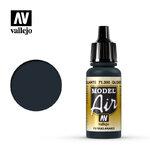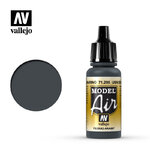SpicyJuan11
Senior Airman
What color was the F6F-5 Hellcat exactly? I'm building the 1:72 Hobbyboss kit (USS Princeton, White 7) and would like to use Vallejo "Model Air" colors. However I'm finding lots of different answers
The 1:72 Hobbyboss kit calls for "Glossy Sea Blue" which matches Vallejo's 71.300 "Glossy Sea Blue" (FS15042, ANA623)
Eduard recommends Gunze H54/14 "Navy Blue" which matches Vallejo's 71.295 "USN Sea Blue" (FS35042; ANA607)
Airfix's 1:24 monster calls for Humbrol 15 "Gloss Midnight Blue" which matches 71.090 " Deep Sky" (FS35056)
Which to choose?
The 1:72 Hobbyboss kit calls for "Glossy Sea Blue" which matches Vallejo's 71.300 "Glossy Sea Blue" (FS15042, ANA623)
Eduard recommends Gunze H54/14 "Navy Blue" which matches Vallejo's 71.295 "USN Sea Blue" (FS35042; ANA607)
Airfix's 1:24 monster calls for Humbrol 15 "Gloss Midnight Blue" which matches 71.090 " Deep Sky" (FS35056)
Which to choose?


